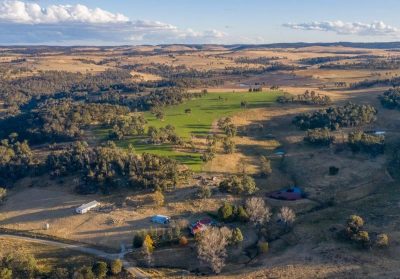
GENERATING carbon credits by storing it in the soil has been gaining plenty of attention and excitement in recent times as Australia looks to find new ways of offsetting its emissions.
Basically, the process involves taking soil samples on a property to determine a baseline of how much carbon is in the soil, changing management practices and monitoring the carbon level with the aim of increasing and generating Australian Carbon Credits Units.
The new method of carbon farming has been gaining plenty of attention lately, with Microsoft buying Australian soil carbon credits through an American scheme, baselining services run off their feet and the value of carbon credits tripling in six months.
While there has been plenty of excitement, producers looking to start soil carbon projects have been urged to act with caution – particularly when making commitments to selling credits.
Dr Stephen Wiedemann from Integrity Ag & Environment has been working closely with industry measuring the carbon footprint of cattle.
He told a Beef Connect webinar yesterday the excitement was justified, and producers should re-run the numbers, but more information was needed about the capability of soil.
“If you look at all the collective science on soil carbon in Australia, the vast majority of it has been tracking the loss of soil carbon – so we know more about losing carbon than we know about gaining it,” Dr Wiedemann said.
“There’s been 100s of studies but there’s only a handful showing positive soil carbon change.”
Dr Wiedemann said small changes in soil carbon had a major impact on the overall capture of emissions, but controlling those changes was tough.
“A 0.1 percent increase in soil carbon, in the 30cm of top-soil, can produce about four tonnes of carbon per hectare,” he said. “If you add some scale to that, with the current price of carbon, you could buy an entire farm those carbon credits.”
“The longest time we have been tracking soil carbon on a farm is 20 years and we have seen swings of 1pc both up and down in that time. Droughts have a strong effect on soil carbon.”
Changes in management should have an impact
With the latest surge in demand for baselining services, Dr Wiedemann said the data was likely to become more conclusive over time. He said the current methods were suited to higher rainfall areas in the southern states.
“History also makes a difference with soil carbon, the lower the bucket is or the carbon the soil has, than there is a better chance of filling it again,” he said.
“There is a lot of practices that positively influence it, including irrigation, perennial pastures, optimising soil nutrient management, optimising grazing practices, high ground cover, introducing legumes, compost, manure and more.”
Dr Weidemann also highlighted some challenges with increasing soil carbon, especially some Qld studies where it was hard to increase carbon. He said it was a marathon and not a sprint.
“Some of the research has shown that if you go into a renewal phase, you will take about five years to make up the soil-carbon loss of cultivating,” he said.
“Don’t expect to baseline your property today and become carbon neutral tomorrow, it takes time and planning and it takes investment.”
